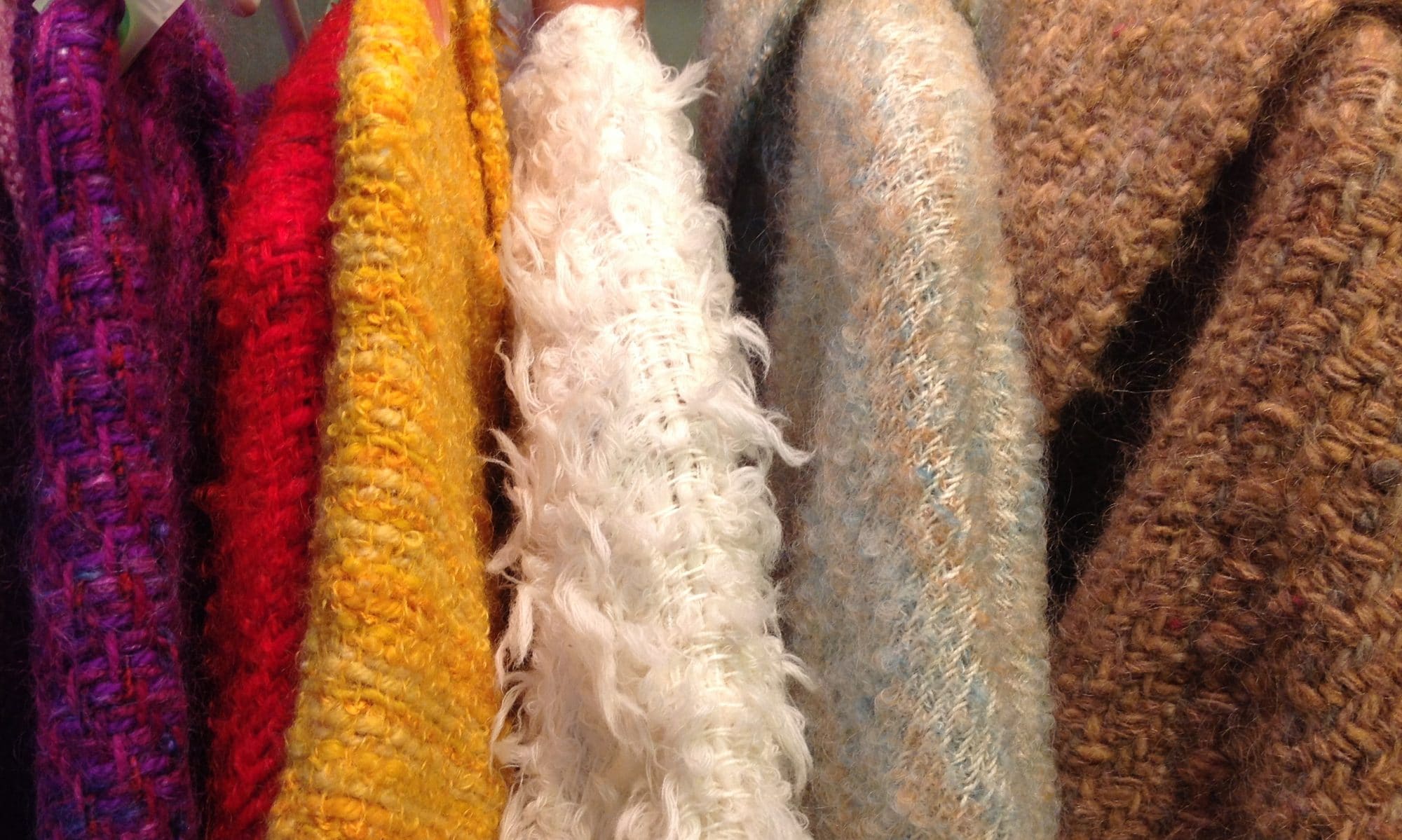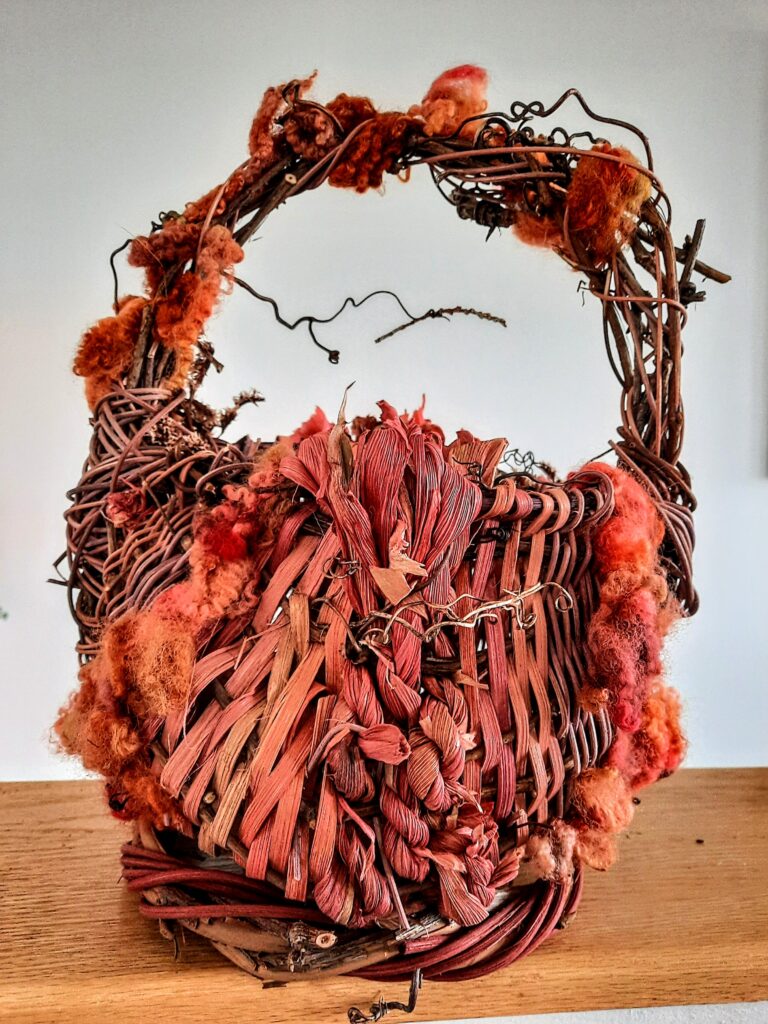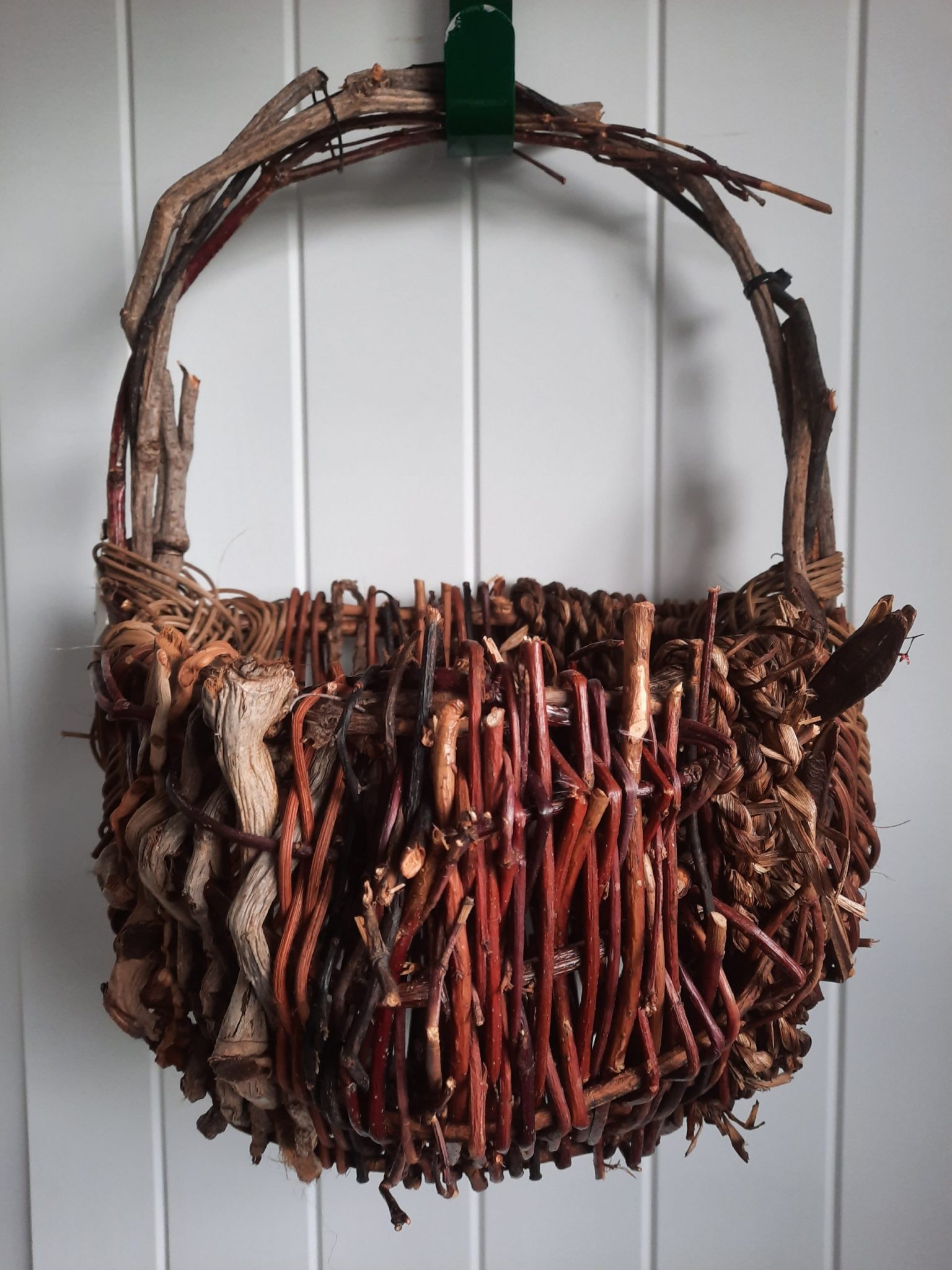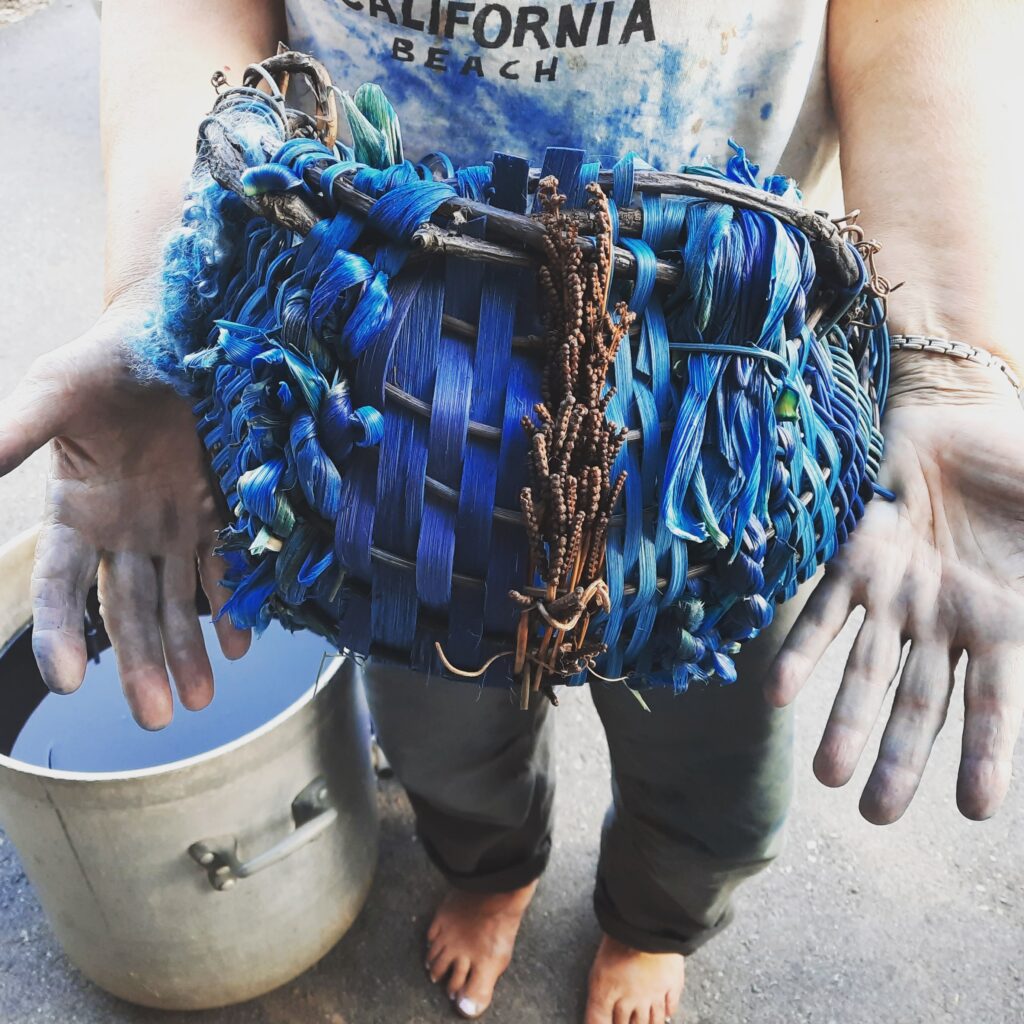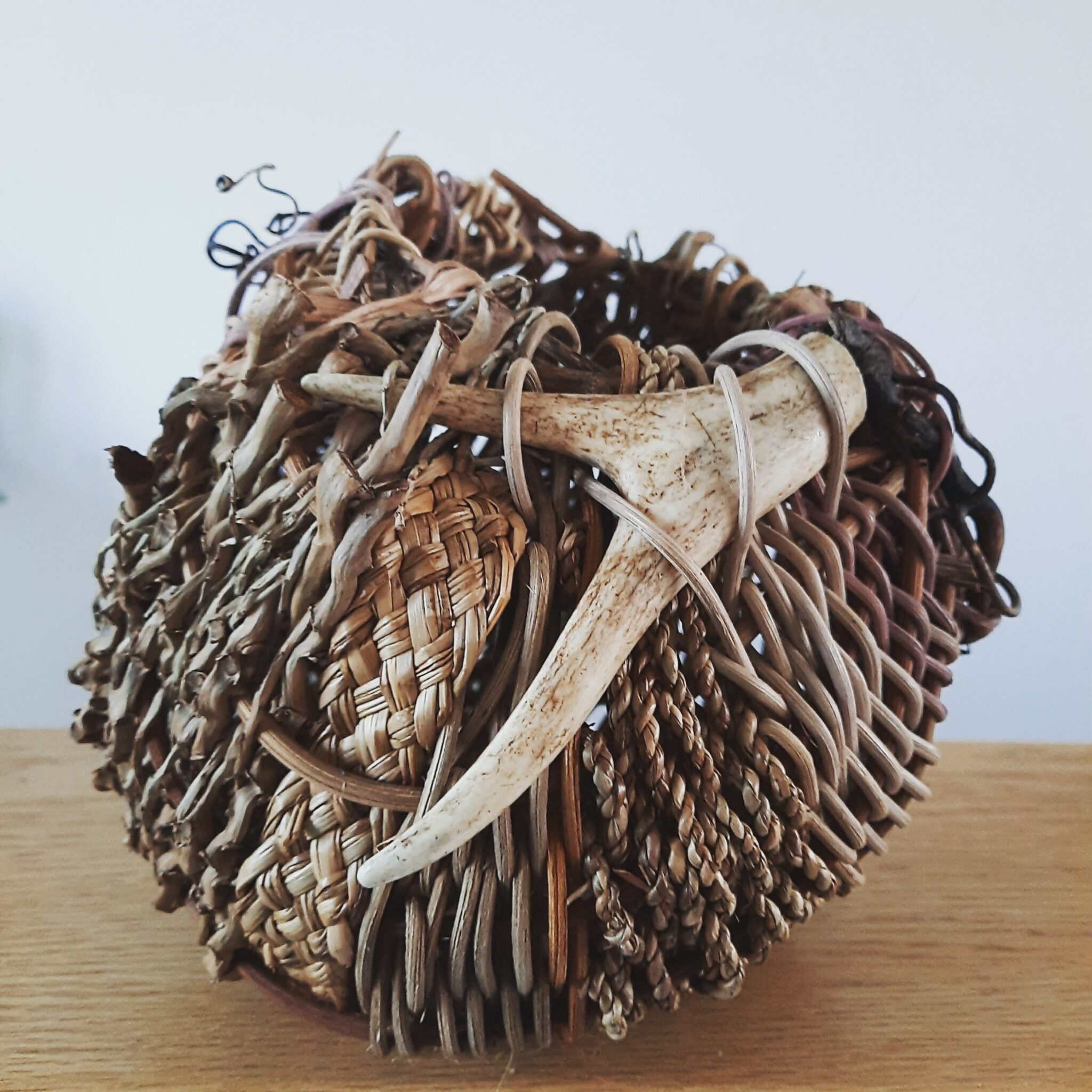I am asked this question often, by students, by other weavers and knitters, by clients. The answer is complicated, as there is definitely not one source. As a production weaver, I use up a great deal of yarn. AND, I try to only use natural fibres, wool, mohair, alpaca, cotton, silk. I really cannot consider purchasing much yarn at retail prices! So, I cast a wide net to locate yarn I can afford. I am drawn to colour and texture and have lost sources for many favourite yarns over the years as they have moved out of fashion or just out of production or out of my budget price wise. This post will describe how I acquire my raw materials these days as opposed to how I found them in the past.
If I were to purchase yarn from a retail outlet today, I would contact Maurice Brassard et Fils in Plessisville P.Q. They have a good variety and reasonable prices for a retail outlet. Very pleasant people and good service. I have stopped in there enroute to the East Coast. They are in the same building as LeClerc Looms.
Another retail source I have ordered yarns from is Briggs and Little Woolen Mills in New Brunswick . They have heather tone wools, not very soft to the touch, and the colours aren’t fabulous somehow. Sort of grouchy sales people . I have stopped in there as well, enroute to Nova Scotia. Sometimes they have had “reduced” prices on some overstocked or somehow not perfect yarns in the shop.
As well, wherever I travel, I research local yarn stores. It’s fun to walk around, and often I have found “discontinued” or “reduced” Yarns. I remember an amazing winter sale at a yarn store in Nanaimo B.C. Such fun to scoop up such useable and beautiful mohairs!
Beautiful yarns can be found at Fleece Artist in the Maritimes and Webs in Massachusetts, but these sources are too expensive for production weaving. So that is retail, but that is such a small percentage of my yarn purchases,
Wholesale type prices can be found online at Ice Yarns. They are located in Turkey, but offer amazingly fast delivery. Their “Reduced Prices” section can be amazingly affordable. The end cost is often double what one pays for the yarn, when shipping and Duty is added. But it still is very affordable. The yarn all comes in balls, not cones, but I still use it for weaving.
I have purchased a lot of yarn from “Dead Weavers”. That is when a weaver dies, or can no longer weave for any reason and they or their relatives try to dispose of the stash. Sort of a cautionary tale, for any of us aging weavers! I have obtained such beautiful yarns that way! Most memorable was from a diplomat’s wife. That woman had purchased yarns all over the world. The yarns from England, France and Germany are often very beautiful. Currently, I am working with a local woman who purchased an enormous yarn lot from an online auction. We are working on a yarn sale of the ones she and I do not want. I scooped up some ABSOLUTE treasures recently from her. I really wished I had known the previous owner of these yarns as our tastes really coincide. I purchased some beloved yarns I had used over the decades that are now totally unavailable, reminding me of the shop, The Newfoundland Weavery, which used to be in the Yorkville Village in Toronto.
The Newfoundland Weavery purchased bulk orders of yarns from Galashiels, Scotland and then sold them at a very reasonable price. They had beautiful colours, textures, fibre contents, the exact yarns which often were to be found otherwise in very expensive shops. I started making my own bulk orders there. I also made a point of going to Galashiels one time, walked right up to the door with the address that I had used over the years, and chose my bulk order from their shop. Another place I really loved to order from was The Handweaver’s Studio in London, England. I fell in love with mohair loop boucle because of that shop, and purchased lots when shipping fees were lower than they are now. Also, I would ask travellers like my daughter or my husband to stop in and bring me back yarn from there in those days when a reasonable amount of luggage was included in Air Travel.
Another international shopping adventure was a huge warehouse just north of Atlanta, Georgia. The shopping area was the size of a football field and had snakes lurking in it. We would stop in enroute home from more southern sites, and my husband would also shop there solo for me. They had great cottons at great prices. Now, alas, closed.
I also used to order some primitive yarns in great colours from Greece, but stopped when I lost an order due to an epidemic of anthrax there. I think I first bought these yarns at the Newfoundland Weavery shop, and I also visited that mill in Crete.
More International shopping. Surprisingly fabulous mohair can be found in South Africa. I brought home as much as I could. There is a sock industry called Thermohair, located in my own community, which uses South African mohair. New Zealand has fabulous yarn and beaches, and I shipped home large bags full of yarns which cushioned the treasures I had found on beach walks.
OK, on to Thrift Stores! Again, lots of yarns from “Dead Weavers” can be found there. Also just yarns that people have grown tired of and plan to never use. I always check out that section if I am thrift store shopping. You would be surprised what lurks there.
People also give me yarn! The most amusing gift was a huge collection of vintage balls of wool that someone had inherited and did not know what to do about it. I met her at a craft show and she actually even delivered it all to my home studio, all these balls with adorable vintage labels and of many colours. Much thinner yarn that I usually use but I would add it to mixed yarn wefts. And somehow, at this point, it is almost totally gone. Another weaver gave me gorgeous yarns which she said she would never use, but when she saw what I made from them, she expressed regret that she had given up on them. I try to remember to be generous.
Writing this, such nostalgia, such memories. I am currently very inspired by my latest acquisitions and anxious to…. get back to weaving!
